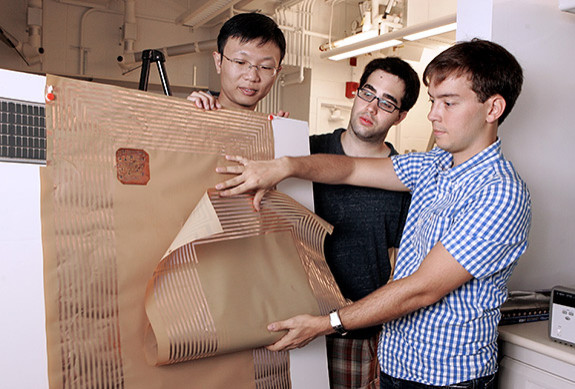These Walls Can Do More Than Talk: Researchers Develop Walls With Embedded Radios

The old expression "If these walls could talk" could soon be more than hypothetical. Researchers have created walls that can listen as well as talk, thanks to embedded radios. The walls are actually thin, flexible sheets of plastic that can be painted and placed in any location or on any surface.
The radios are embedded right onto the plastic sheets, a difficult process that a team of researchers from Princeton University had to overcome in order to produce high-quality transmissions. The team believes the technology will have numerous applications and will be more than just a novel experiment on new ways to embed electronics onto plastic. The radio-embedded walls could be used to create direct communication systems, an invisible network, or for architectural and engineering uses such as monitoring the structural integrity of a bridge or road.
The major hurdle the researchers had to overcome was the melting temperature of plastic and the high temperatures generated by radio and transmitter circuitry. New techniques were developed to prevent the plastic from melting, but they also made for poorer-quality transmissions, preventing the process from having any practical application in a real-world setting.
The new design from the Princeton researchers changes the material used in the transistors. Instead of using high-speed, highly efficient crystalline silicon, the team opted for slower, amorphous silicon, which reduced the temperature but also reduced the frequency. To solve this new problem, the team went "back in time" to a circuit developed in 1922 by Edwin Armstrong, the creator of frequency modulation (FM) radio transmission. Armstrong’s super-regenerative circuit uses other components to bolster frequency, letting the researchers use the amorphous silicon within their transistor and reducing the temperature from 1,000 degrees Celsius (1,832 degrees Fahrenheit) to 300 degrees Celsius (572 degrees Fahrenheit).
The super-regenerative circuit uses a capacitor and an inductor as an electron relay station, storing and discharging energy to speed up the electrons as they pass through the transistor, thus increasing the frequency. The large surface helped the researchers create large inductors, reducing the loss of electrons, and creating plastic walls that are as thin and flexible as wallpaper and can be applied almost anywhere. Solar cells can be added to the plastic to serve as the energy source.
Naveen Verma, one of the project’s leaders, said in a statement, “That is where our breakthrough came — when you go bigger, what do you have at your disposal to make things work better?” The next step for researchers is using the radio walls as a way to monitor the structural health of bridges, pipelines and buildings. The radios allow for a much larger area of coverage compared to the fiber-optics systems currently in use. A prototype is expected to be completed by the end of September.
© Copyright IBTimes 2024. All rights reserved.












